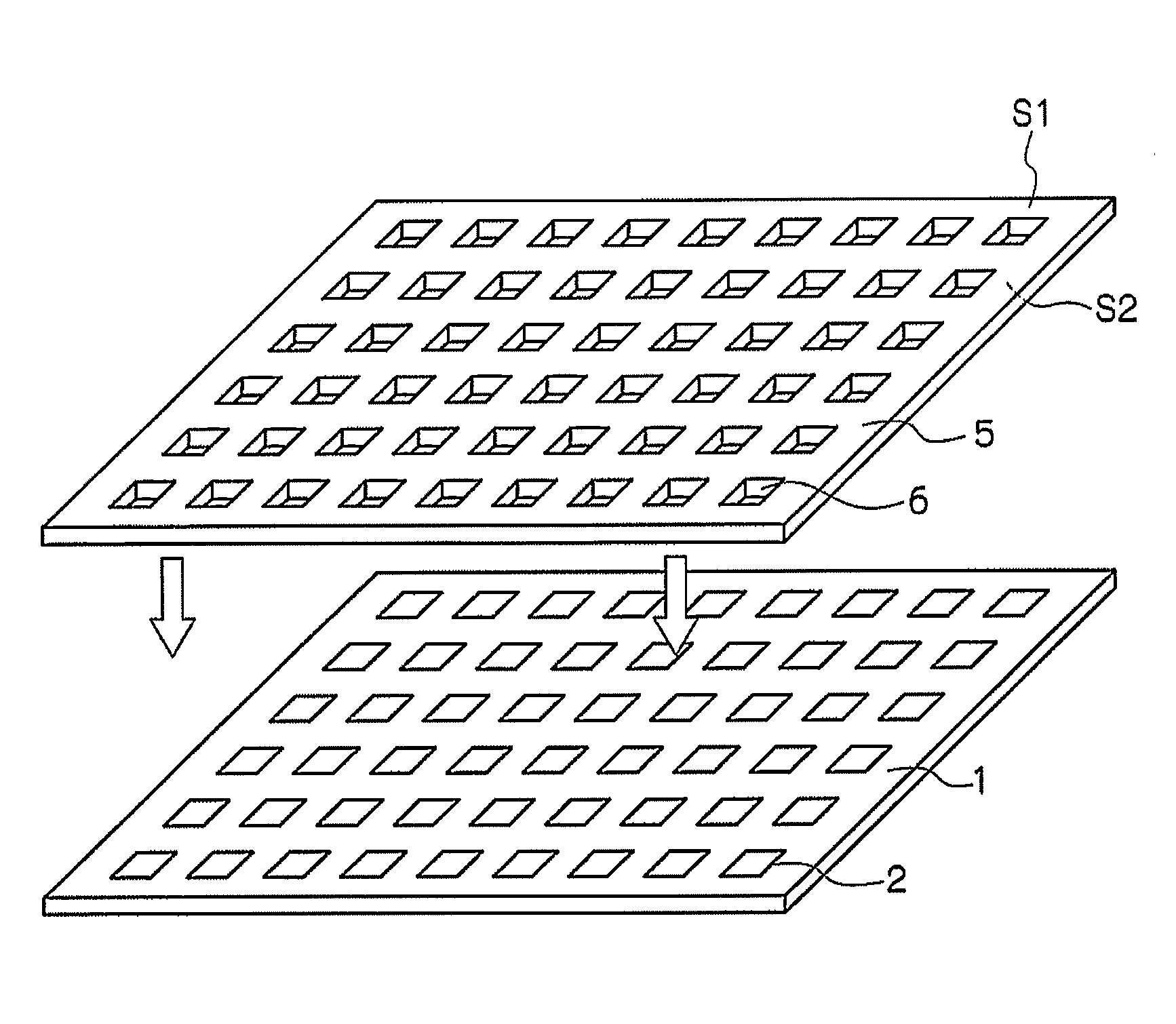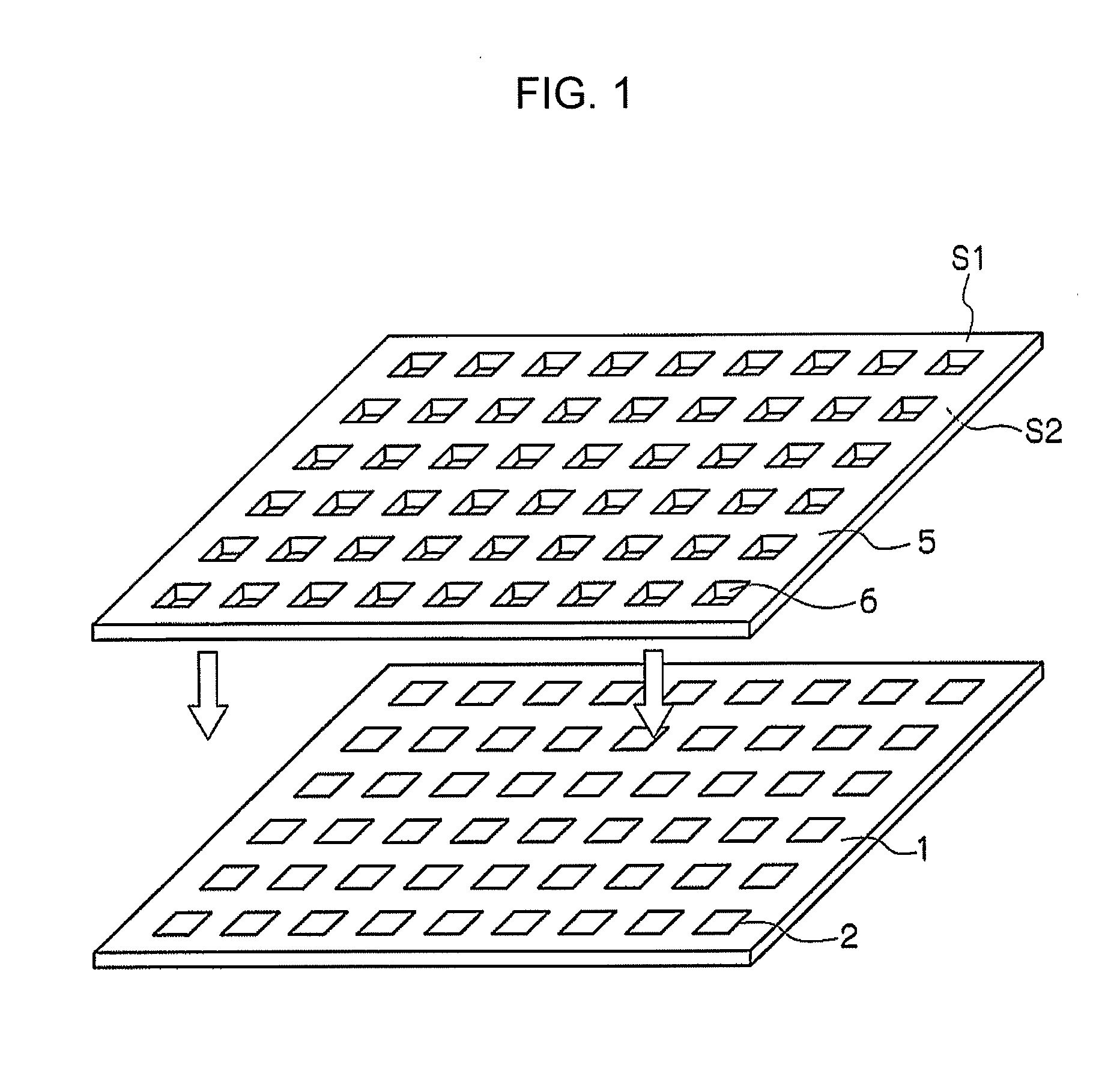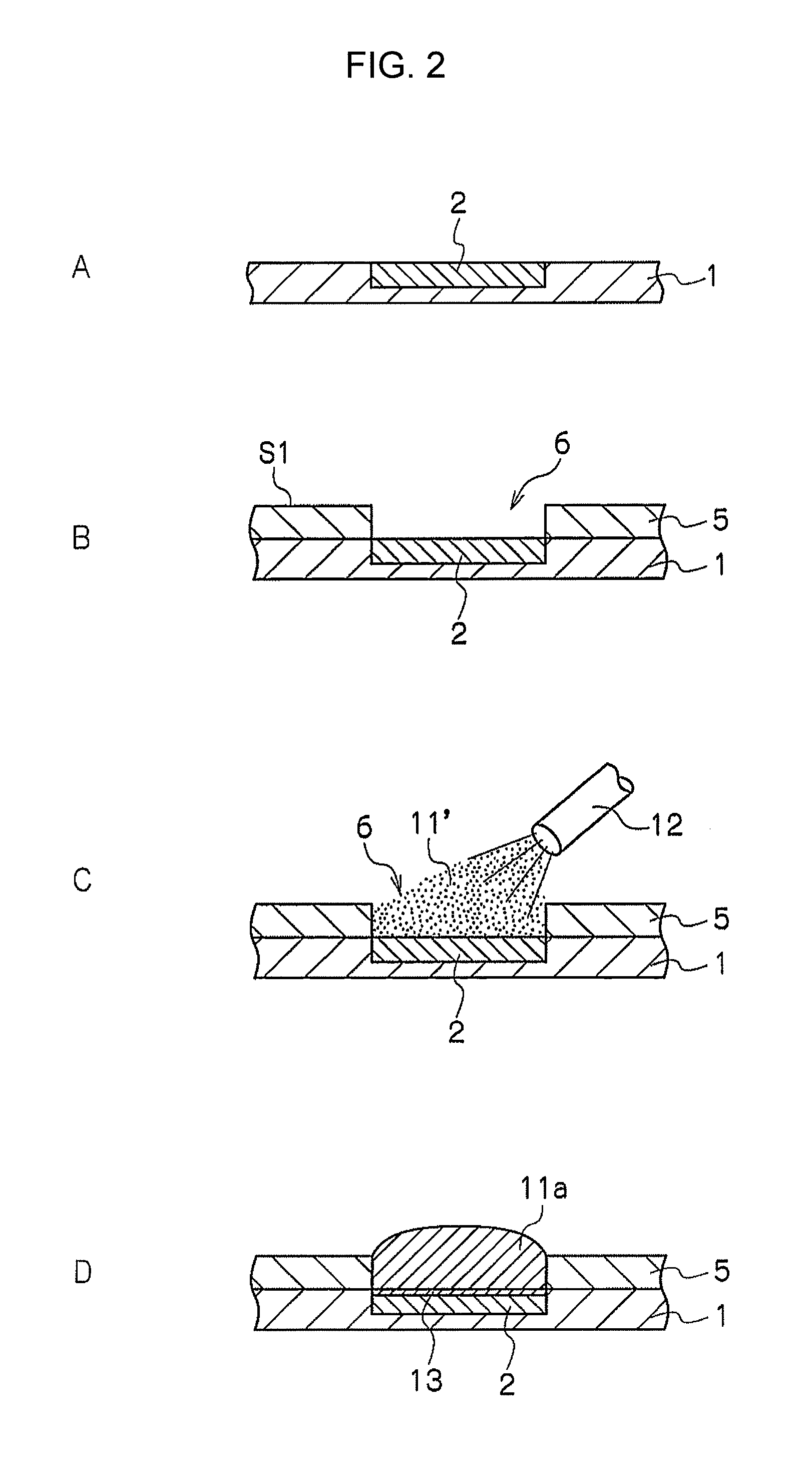Solder bump, method for forming a solder bump, substrate provided with solder bump, and method for manufacturing substrate
a technology of solder bump and solder bump, which is applied in the direction of auxillary welding devices, non-printed masks, and semiconductor/solid-state device details. it can solve the problems of low productivity and the problem of copper corrosion still unsolved, and achieve the effect of suppressing copper corrosion occurring in conventional soldering, high dimensional precision, and easy formation
- Summary
- Abstract
- Description
- Claims
- Application Information
AI Technical Summary
Benefits of technology
Problems solved by technology
Method used
Image
Examples
example 1
[0082]As one example, there was prepared substrate 1 having a copper wiring pattern having a width of, for example, 200 μm and a thickness of, for example, 10 μm formed thereon. On the substrate 1, there were exposed only joint portions of the copper wiring pattern that were to be portions for mounting electronic components and had a width of, for example, 200 μm and a length of, for example, 50 μm, whereas the other portions of copper electrode 2 were covered with an insulation layer. There was prepared mask 5 provided with opening portions 6 used for forming solder bumps 11 at such joint portions. Positions of the joint portions where copper electrode 2 was exposed on substrate 1 were matched with positions of the opening portions 6 of mask 5 to superimpose with each other. Then, using a quinary lead-free solder consisting of Ni: 0.05% by mass, Ge: 0.005% by mass, Ag: 3% by mass, Cu: 0.5% by mass, and Sn for the rest, the solder was heated to 250° C. to obtain molten solder 11a, a...
example 2
[0085]Solder bumps 11 according to Example 2 were formed in the same manner as in Example 1 except for using a quinary lead-free solder consisting of, as solder materials, Ni: 0.03% by mass, Ge: 0.005% by mass, Ag: 3% by mass, Cu: 0.5% by mass, and Sn for the rest. Similarly to Example 1, scanning electron micrographs of a section of obtained solder bump 11 were taken and indicated that Cu—Ni—Sn intermetallic compound layer 13a was formed with a thickness of 1 μm, although unevenness was slightly observed.
example 3
[0086]Solder bumps 11 according to Example 3 were formed in the same manner as in Example 1 except for using a quinary lead-free solder consisting of, as solder materials, Ni: 0.07% by mass, Ge: 0.005% by mass, Ag: 3% by mass, Cu: 0.5% by mass, and Sn for the rest. Similarly to Example 1, scanning electron micrographs of a section of obtained solder bump 11 were taken and indicated that Cu—Ni—Sn intermetallic compound layer 13a was formed uniformly with a thickness of 2 μm.
PUM
| Property | Measurement | Unit |
|---|---|---|
| width | aaaaa | aaaaa |
| width | aaaaa | aaaaa |
| width | aaaaa | aaaaa |
Abstract
Description
Claims
Application Information
 Login to View More
Login to View More - R&D
- Intellectual Property
- Life Sciences
- Materials
- Tech Scout
- Unparalleled Data Quality
- Higher Quality Content
- 60% Fewer Hallucinations
Browse by: Latest US Patents, China's latest patents, Technical Efficacy Thesaurus, Application Domain, Technology Topic, Popular Technical Reports.
© 2025 PatSnap. All rights reserved.Legal|Privacy policy|Modern Slavery Act Transparency Statement|Sitemap|About US| Contact US: help@patsnap.com



